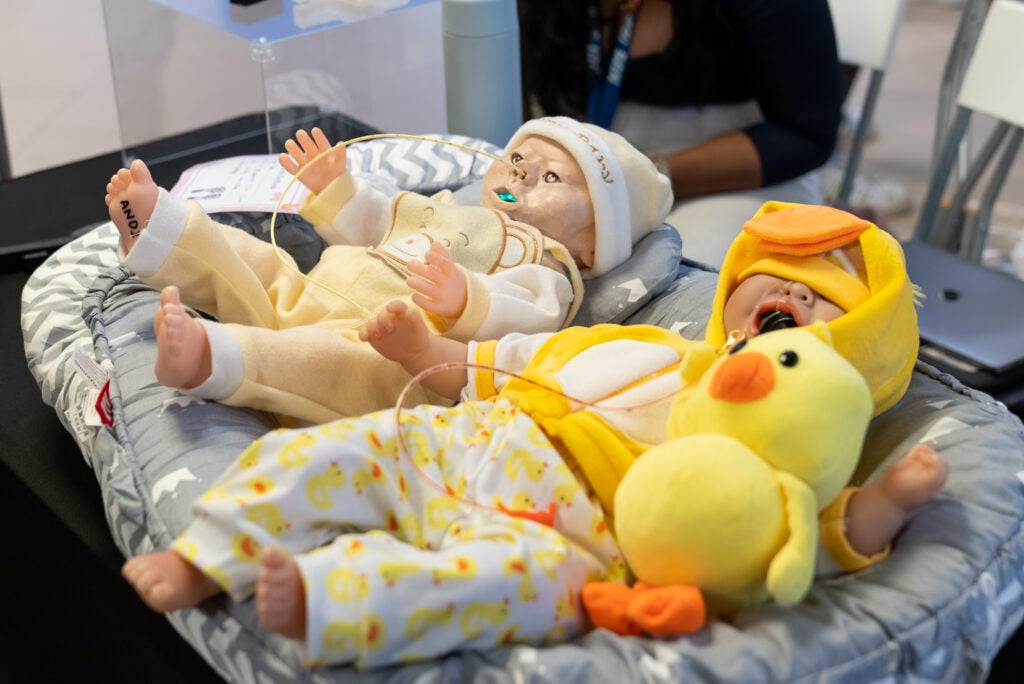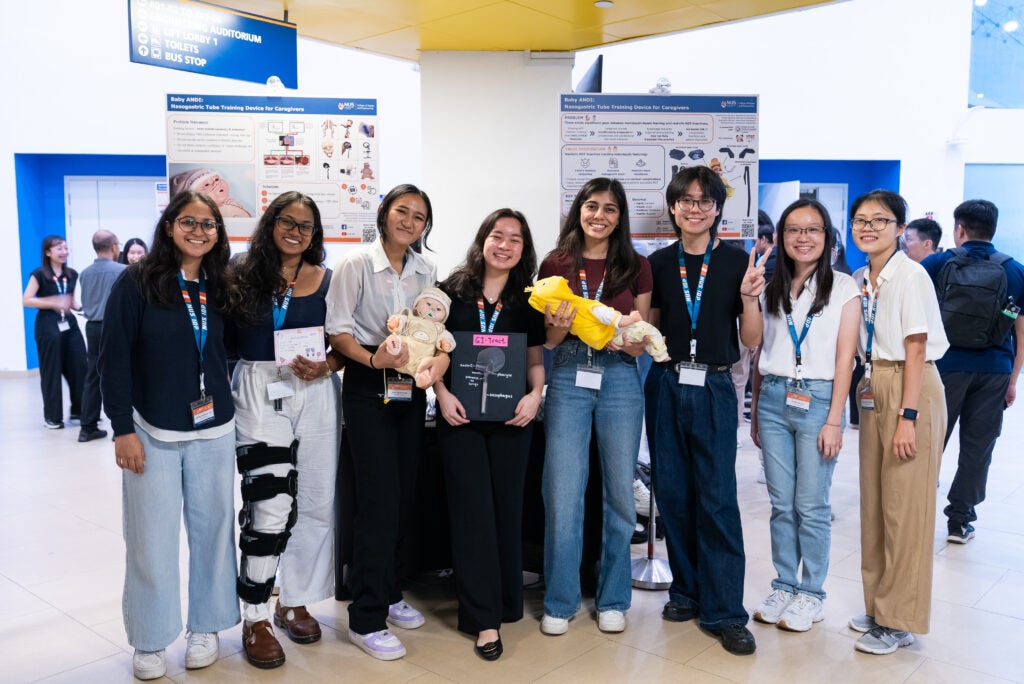Baby ANDI: nasogastric tube training device for caregivers
This project focuses on creating a more realistic and effective training mannequin for nasogastric tube (NGT) placement, a flexible tube inserted through the nose into the stomach to deliver or remove substances, particularly for infants around 4 months old who struggle to obtain nutrition orally.
Existing training devices which also include other types of mannequins have been rated poorly by caregivers and nurses from our industry partner due to their lack of anatomical realism and tactile sensation. Moreover, these devices do not include physical responses that would simulate patient distress. These shortcomings make it difficult for caregivers to adequately prepare for NGT placement in real-life situations, increasing the risk of complications.
To address these issues, we developed a training mannequin that provides enhanced anatomical accuracy and realistic tactile sensations, along with responsive feedback mechanisms, including simulated blue lips and crying to effectively mimic patient distress. By improving the realism of this training device, we seek to build confidence and ultimately reduce errors during NGT placement, increasing caregiver competence of insertion from 70% to 90%, signifying a greater likelihood of inserting the NGT correctly on the first attempt, therefore improving patient experiences.


Project Team
Students:
- Chan Loi Yen, Caroline (Biomedical Engineering, Class of 2026)
- Cheekoty Prerana Aditi (Biomedical Engineering, Class of 2026)
- Chong Tse-Ning (Biomedical Engineering, Class of 2026)
- Dylan Woo Wei Bin (Biomedical Engineering, Class of 2026)
- Elise Tan En Ci Paa (Biomedical Engineering, Class of 2026)
- Erica Molenberg (Biomedical Engineering, Class of 2026)
- Gore Kyra Rahul (Mechanical Engineering, Class of 2026)
- Kirthana Ravindran (Biomedical Engineering, Class of 2026)
Supervisor:
- Dr Andi Sudjana Putra


